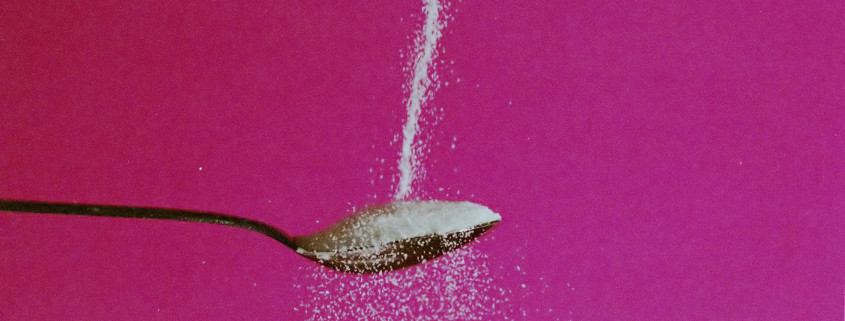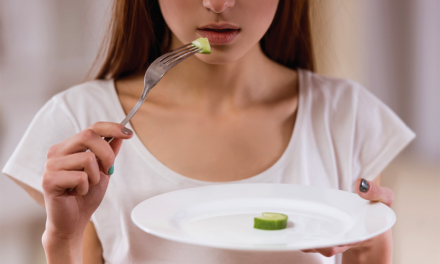Sugar.
Remember when this simple, sweet substance sat in a mountainous heap, tightly sealed inside the sugar jar atop the kitchen counter, ready for when mom decided to pry open the lid to make those mouth-watering chocolate chip cookies? We knew what sugar was, how much to use, and how it affected our bodies.
But now, sugar goes by many different pseudonyms. Which colored packet should you use in your coffee? Is a natural source better than regular sugar? Does the color brown make it more healthy? Do artificial sweeteners even count as sugar?
There are many different chemical processes that pose as sugar, there are natural trendy herbal options such as Stevia, and even sugar alcohols hidden way down on the list of ingredients that make it difficult for even the most sugar-savvy to detect, let alone your average Jane.
The struggle is real. While this can be confusing and frustrating to the consumer when glancing at the nutritional content on the side of the box, it’s important to be able to identify what our bodies will essentially intake as sugar and which copycat sugars are okay to use.
When it comes to these daily choices we often find ourselves being forced to make, education on what’s out there is our best defense to making smart choices that won’t lead to things like skin aging, fat build-up, sluggishness, lack of energy and excess cravings.
According to Mayo Clinic’s article, “Artificial Sweeteners and Other Sugar Substitutes”, there are four major groups of sugars.
Some are nutritive meaning they carry that added punch of calories, and some are non-nutritive, meaning they actually do not contain any calories.
Want a simple way to remember the difference? Nutritive sugars register the calories by your body and are absorbed by the body. Non-nutritive are not absorbed, hence no calories!
Artificial sweeteners are of the non-nutritive sort. Think you’re home free? Think again. While these offer an overt sweetness and no calories, studies suggest that these sugar posers actually throw off the body’s ability to compute any calories and subsequently have been correlated to weight gain in consistent consumers.
How do artificial sweeteners show up in real life? These are the colorful packets we pour into our coffees each morning that seem “better” than regular granulated white sugar and actually offer a sweeter taste than sugar. They appear on our food’s nutritional content list under the guises of Aspartame, Sucralose and Splenda and are used to sweeten diet sodas.
Next, we have sugar alcohols. While this sweet element bears a similar resemblance to the chemical structuring of sugar, these are in fact carbohydrates. Sugar alcohols go by names like Erythritol, Malitol, and Sorbitol and these carbohydrates are found naturally in fruits and vegetables, although they can be chemically be manufactured as well. These are of the nutritive family so they carry calories with them, but only about half of the calories in a sugar alcohol are absorbed by the body, splitting the calorie count in half to a serving size of actual sugar. This option is a clear winner for low-sugar seekers and also a smarter choice when consumed in small amounts for diabetics, as it is not as easily absorbed by the bloodstream
Steviol, a novel sweetener, is non-caloric and sugar-free due to its inability to be absorbed by the body at all. The commercialized product “Stevia” sold in stores contains traces of glucose which are absorbed by the body. Glucose is a simple sugary syrup made up of many carbohydrates.
What about natural sugars?
Natural sugars generally offer additional health benefits, however for the calorie-conscious, natural sugar doesn’t allow for over-indulgence. As a rule, sugar is still sugar. So, when it comes to things like fruit juices or concentrated natural sweeteners like Agave nectar, ask yourself this question: is this still sugar?
Sweetening elements like honey, brown sugar in the raw, or fructose all come from natural sources, however they are so concentrated, that without the balance of other elements, the body still receives that sugar shock upon consumption and reads the chemical structure as sugar. When going for natural sugars, it’s important to remember all the other components that should be invited to the food party. Drinking apple juice is like drinking liquified sugar while eating an apple offers your body sugar alcohols combined with all the other nutrients and offers the ‘meat’ of the apple to balance it out.
Essentially for all you calorie-conscious readers, it all comes down to how much of this sugar knock-off is being absorbed by your body. Sugar alcohols are less-absorbent than regular sugar. Artificial sweeteners in theory should help with weight gain, yet seem to take the consumer a few steps back, rather than helping you cut a calorie corner. Might as well enjoy the real thing.
So next time you reach for a sweetener to add to your coffee, remember to be mindful of artificial sweeteners and to either use a natural sugar in small doses or to go for a sugar alcohol. Not all sweeteners posing as sugar are bad. Just remember which ones are posing a threat to your health and which ones are sweet as can be.






